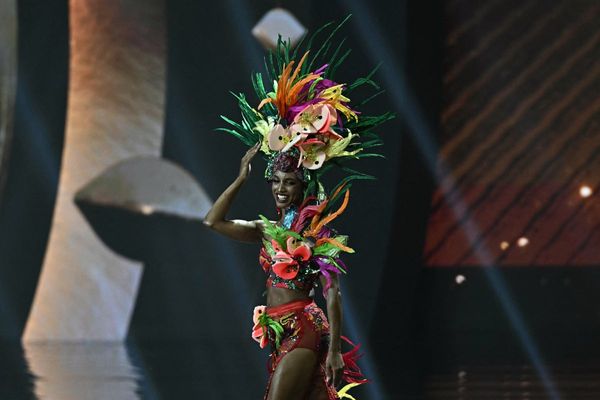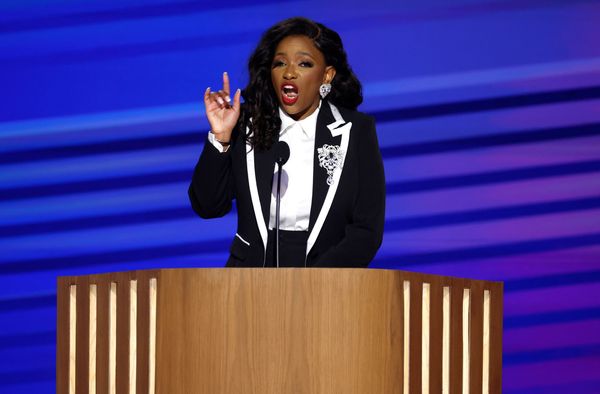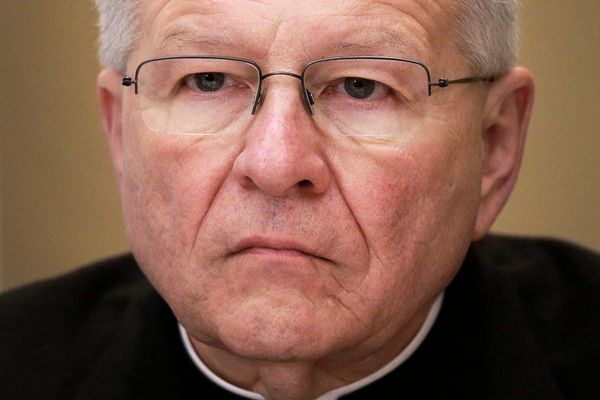WASHINGTON – President Joe Biden was minutes into his first address to a joint session of Congress. His prepared remarks called for him to say that he was “asking the vice president to lead” the effort to pass his infrastructure plan.
But when Biden got to the line, he shifted to face Kamala Harris, who was sitting on the dais above him, and added the phrase “if she would.”
“Of course,” Harris replied, before Biden turned around and signaled his confidence in her by saying, “because I know it will get done.”
The entreaty shifted attention momentarily to Harris. Whether she wants it or not, being the first Black person, first woman, and first person of South Asian descent in the second-highest elected office has already put an unusual amount of focus on a vice president.
“She will be in the spotlight whether or not she’s putting herself there,” said Brian Brokaw, a former political adviser and campaign manager to Harris. “I think she is going to be probably covered more than any vice president — at least at this stage of the administration — than anyone in recent history. But she’s not getting out ahead of anybody there.”
Harris, like most vice presidents, has had to carefully carve out a role as a trusted presidential adviser who is viewed as a team player inside and outside the White House. Any project she takes on must be seen as advancing the president’s priorities, and under no circumstances can she be seen as attempting to overshadow Biden or positioning to run for president.
“The key thing for the vice president to be successful is to focus on now and not be focused on the future,” Joel Goldstein, an emeritus law professor at Saint Louis University and an expert on the vice presidency, said. “When people speculate about the future, it creates problems for the vice president.”
In interviews, senior aides to Harris spoke about the vice president’s efforts to shape policies in line with the president’s agenda and her emphasis on including overlooked and historically marginalized groups. They said those efforts manifested in the COVID-relief package and in the vice president’s efforts to bring attention to the declining number of women in the workforce.
“She’s constantly pushing us to think through who’s not included in policies that should be, and let’s do the work to make sure that when people see that policy, that they see themselves in that policy,” said Rohini Kosoglu, domestic policy adviser to Harris.
Michael Pyle, chief economic adviser to Harris, said the vice president’s team worked closely with the president’s team to craft proposals targeted at essential workers and children. The result was an expansion of a tax credit for childless workers that he said “was at the core of the rescue plan” and the extension and expansion of a tax credit for families with children.
“In the rescue plan, those to me really in my mind are kind of hallmark accomplishments in terms of her shaping policy outcomes with tangible benefits for people,” Pyle said.
Harris is frequently in the room with Biden for briefings and major announcements. But she is increasingly forging her own path, taking solo domestic trips and meeting alone with foreign dignitaries. She met with Japanese Prime Minister Yoshihide Suga at the White House in April in her office before his meeting with Biden.
She is preparing to take her first international trip as vice president, a solo visit in June, to meet leaders in Mexico and Guatemala about curbing the migration of their citizens, which is creating a major problem at the southern border of the United States.
White House press secretary Jen Psaki said Harris’ work on migration and her elevation of the issue of vaccine hesitancy are examples of the vice president identifying people who “do not always have their voices heard and making sure that there is someone in the White House who has a seat at the table who is speaking on behalf of those communities.”
Harris also brings a unique perspective as a former prosecutor and attorney general, Psaki said in an interview. “You can see that in how she asks questions in meetings and how she makes a case in meetings.”
HARRIS’ CHALLENGE
In a CNN interview this month tied to her first 100 days in office, Harris reflected on Biden choosing her as his vice president despite their “very different life experiences” though they have similar values and principles.
“But it was something that I know he was very intentional about in terms of asking me to run with him and to serve with him, which is that I will bring a perspective that will contribute to the overall decisions that we make,” Harris said.
Brokaw said he expects Harris to increase her public appearances as the pandemic eases.
“I think she’s only going to become more and more visible as the country continues to open up,” he said. “I think we’re gonna continue to see her being a strong presence both at the president’s side and on her own right.”
Goldstein of Saint Louis University said Harris is still trying to determine what the right balance is between being a behind-the-scenes adviser to the president and taking on public assignments that grab attention.
“One of the challenges about being vice president for any vice president is that much of what you do is behind the scenes, and it remains behind the scenes,” he said. “You sort of make your case when you’re meeting with the president or during the policymaking process, but then once the decisions are made, your job is to help implement and your role is really to give credit to the president and the administration and not to be trying to claim credit yourself.”
Goldstein said Walter Mondale, who was vice president to Jimmy Carter, established the modern approach to the role, and set the tone that the best thing that any vice president can do to promote their own political future is to help the administration be successful. Harris spoke to Mondale this month, days before he died.
Harris, 56, who competed for the presidency last year before joining Biden on the ticket, is widely expected to run for the White House again.
“By virtue of Biden’s age, he will definitely be a one-term president and that means that Harris will enjoy growing prominence in the second half of Biden’s term,” author and historian Ron Chernow said in an email.
“I think he needs to give her some independent portfolios — some large and challenging tasks — lest she always be seen to be standing in his shadow both figuratively and literally,” he added.
Biden handing Harris the migration problem is a good start, Chernow said.
Goldstein said that Biden giving such a difficult issue to Harris is a signal that he has confidence in her.
“If you have a vice president who’s only getting easy feel good sorts of issues, it probably signals that on the really tough stuff, the president’s turning to other people,” he said.
The relationship between Biden and Harris has been described by current and former aides as genuinely warm, having bonded over their memories of the president’s late son, Beau Biden.
And while they previously served in the Senate at different times and are from different generations, they were described as having a mutual respect for one another, as evidenced by the way Biden routinely turns to Harris to ask her opinion.
“You can really see they’re making decisions in consultation with each other,” Psaki said, “which is how it should work.”
____







